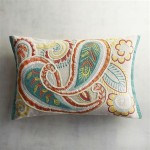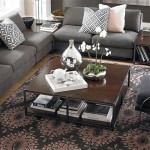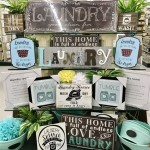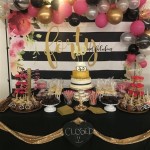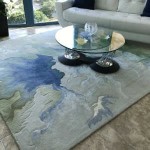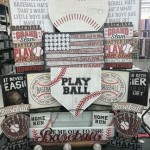Decorative Metal Panels for Cabinets: Aesthetic Enhancement and Functional Design
Decorative metal panels are increasingly employed in cabinet design to incorporate visual interest, texture, and resilience. These panels offer a versatile alternative to traditional wood, laminate, or glass, providing a distinct aesthetic that complements various interior design styles. The use of metal in cabinet construction extends beyond purely decorative purposes, contributing to the structural integrity and longevity of the cabinetry.
The incorporation of decorative metal panels into cabinet design allows for extensive customization. Metals such as aluminum, stainless steel, brass, copper, and bronze can be manipulated to achieve diverse textures, patterns, and finishes. The flexibility inherent in metal fabrication processes enables the creation of unique cabinet designs that reflect specific aesthetic preferences and functional requirements. This article will explore the various aspects of decorative metal panels for cabinets, from material selection and design considerations to applications and installation.
Material Selection Considerations for Decorative Metal Panels
The choice of metal significantly impacts the overall aesthetic and performance of decorative cabinet panels. Each metal offers distinct characteristics in terms of appearance, durability, corrosion resistance, and cost. Understanding these attributes is crucial for selecting the appropriate material for specific cabinet applications.
Aluminum: Aluminum is a lightweight and highly corrosion-resistant metal, making it a popular choice for cabinet panels in environments prone to moisture or humidity. It is relatively inexpensive compared to other metals and can be easily formed into complex shapes. Aluminum panels can be anodized to create a durable, colored finish or powder-coated for increased scratch resistance. The lightweight nature of aluminum also simplifies installation and reduces the load on cabinet structures. However, aluminum is softer than steel and may be more susceptible to dents or scratches under heavy use.
Stainless Steel: Stainless steel is renowned for its durability, corrosion resistance, and hygienic properties. It is commonly used in kitchen and laboratory cabinets due to its ability to withstand harsh cleaning agents and resist bacterial growth. Stainless steel panels offer a sleek, modern aesthetic and are available in various finishes, including brushed, polished, and textured. While stainless steel is more expensive than aluminum, its longevity and resistance to staining make it a worthwhile investment in high-traffic areas. It's important to note that stainless steel can be prone to fingerprints and smudges, requiring regular cleaning to maintain its appearance.
Brass: Brass provides a warm, elegant aesthetic that can enhance the visual appeal of cabinets in living rooms, dining rooms, and studies. Brass is a relatively soft metal that can be easily shaped and embossed, allowing for intricate designs and patterns. Over time, brass develops a natural patina, adding to its character and charm. Brass panels require regular polishing to maintain their original luster or can be left to naturally age for a more rustic appearance. While brass is relatively corrosion-resistant, it is susceptible to tarnishing, particularly in humid environments. Special coatings can be applied to protect the brass from tarnishing and reduce the need for frequent polishing.
Copper: Copper offers a rich, reddish-brown tone that adds warmth and sophistication to cabinet designs. Like brass, copper develops a patina over time, creating a unique and evolving appearance. Copper is naturally antimicrobial, making it a suitable choice for cabinets in kitchens and bathrooms. Copper panels can be hammered, etched, or embossed to create a variety of textures and patterns. Copper is a relatively soft metal and can be susceptible to dents or scratches. Protective coatings can be applied to prevent tarnishing and preserve the original color of the copper.
Bronze: Bronze is an alloy of copper and tin, offering a similar aesthetic to copper but with increased strength and corrosion resistance. Bronze panels are often used in high-end cabinet designs, providing a luxurious and durable finish. Bronze can be cast into complex shapes and features a distinctive warm tone that complements various interior design styles. Similar to copper and brass, bronze develops a patina over time, adding to its character. Bronze is more resistant to corrosion than copper and requires less maintenance. Periodically cleaning bronze panels with a mild soap and water solution is sufficient to maintain their appearance.
Design Considerations for Integrating Metal Panels into Cabinets
The successful integration of decorative metal panels into cabinets requires careful consideration of various design factors. These factors include the overall aesthetic, the panel's size and shape, the method of attachment, and the interaction with other cabinet materials.
Aesthetic Harmony: The metal panel should complement the overall design of the cabinet and the surrounding environment. The choice of metal, finish, and pattern should align with the desired aesthetic style, whether it's modern, traditional, industrial, or minimalist. The color and texture of the metal panel should also be carefully considered to ensure a cohesive and visually appealing design. For example, stainless steel panels often pair well with sleek, modern cabinetry, while brass or copper panels can enhance the warmth and character of traditional or rustic designs. The finish of the metal panel, such as brushed, polished, or textured, can also significantly impact the overall aesthetic. A brushed finish can create a subtle, understated look, while a polished finish can add a touch of glamour and sophistication.
Panel Size and Shape: The size and shape of the metal panel should be proportional to the cabinet and the surrounding space. Large panels can create a bold statement, while smaller panels can add subtle accents. Consider the overall balance and symmetry of the cabinet when determining the panel's dimensions. The shape of the panel can also influence the overall aesthetic. Rectangular panels are commonly used for doors and drawer fronts, while more intricate shapes can be incorporated into decorative elements. The edges of the metal panel should be carefully finished to prevent sharp edges or potential hazards. Edges can be rounded, beveled, or capped with trim to ensure a safe and aesthetically pleasing finish.
Attachment Methods: The method of attaching the metal panel to the cabinet is crucial for ensuring a secure and durable connection. Various attachment methods can be used, depending on the type of metal, the size and weight of the panel, and the overall design of the cabinet. Some common attachment methods include adhesive bonding, mechanical fasteners, and integrated framing systems. Adhesive bonding involves using strong adhesives to attach the metal panel to the cabinet substrate. This method can create a seamless and aesthetically pleasing appearance, but it's important to use adhesives that are specifically designed for bonding metal to wood or other materials. Mechanical fasteners, such as screws, rivets, or bolts, can provide a more secure and durable attachment. The fasteners should be chosen carefully to ensure they are compatible with the metal panel and the cabinet substrate. Integrated framing systems involve creating a frame within the cabinet to support the metal panel. This method can provide added structural support and allow for easier installation and removal of the panel.
Material Compatibility: When integrating metal panels into cabinets, it's important to consider the compatibility of the metal with other cabinet materials. For example, some metals can react with certain types of wood or adhesives, leading to corrosion or discoloration. Choosing materials that are compatible with each other can prevent these problems and ensure the longevity of the cabinet. Consider using a moisture barrier between the metal and wood to prevent moisture absorption, which can lead to warping or rot. Proper ventilation can also help reduce moisture buildup and prevent corrosion. Using compatible hardware and finishes is also crucial for maintaining the aesthetic integrity of the cabinet.
Applications and Installation of Decorative Metal Panels
Decorative metal panels find applications in a wide range of cabinet designs, from residential kitchens and bathrooms to commercial offices and retail spaces. The installation process varies depending on the panel type, attachment method, and specific application.
Residential Applications: In residential settings, decorative metal panels are commonly used in kitchen cabinets, bathroom vanities, and entertainment centers. Metal panels can add a touch of elegance and sophistication to these spaces, while also providing durability and resistance to moisture and stains. Stainless steel panels are often used in kitchen cabinets due to their hygienic properties and resistance to stains from foods and liquids. Brass or copper panels can add warmth and character to bathroom vanities, creating a spa-like atmosphere. In entertainment centers, metal panels can be used to create a sleek and modern look, while also providing ventilation for electronic equipment.
Commercial Applications: In commercial environments, decorative metal panels are often used in office cabinets, retail displays, and laboratory casework. Metal panels can provide a durable and professional-looking finish, while also meeting the specific functional requirements of these spaces. Aluminum panels are commonly used in office cabinets due to their lightweight and corrosion-resistant properties. Stainless steel panels are often used in laboratory casework due to their ability to withstand harsh chemicals and resist bacterial growth. In retail displays, metal panels can be used to create eye-catching and durable displays that attract customers.
Installation Process: The installation process for decorative metal panels varies depending on the type of panel, the attachment method, and the specific application. Before installation, it's essential to prepare the cabinet surface by cleaning it thoroughly and ensuring it is smooth and level. If using adhesive bonding, apply the adhesive evenly to the cabinet surface and the back of the metal panel. Press the panel firmly into place and allow the adhesive to cure according to the manufacturer's instructions. If using mechanical fasteners, pre-drill holes in the cabinet and the metal panel. Align the panel and insert the fasteners, tightening them securely. If using an integrated framing system, assemble the frame within the cabinet and insert the metal panel. Secure the panel to the frame using screws or other fasteners. After installation, inspect the panel for any imperfections or damage. Clean the panel with a mild soap and water solution to remove any fingerprints or smudges.
The integration of decorative metal panels into cabinet design requires a comprehensive understanding of material properties, design principles, and installation techniques. By carefully considering these factors, designers and installers can create cabinets that are both aesthetically pleasing and functionally sound.

Decorative Wire Mesh For Cabinets

7 Beautiful Decorative Wire Mesh Inserts For Cabinet Doors

Hand Woven Kitchen Cabinet Decorative Metal Grille Panels

And Gallery Mcnichols Perforated Metal Cabinet Inserts

Antique Decorative Wire Mesh Panels For Cabinets Doors

7 Beautiful Decorative Wire Mesh Inserts For Cabinet Doors

Hand Woven Kitchen Cabinet Decorative Metal Grille Panels Door Wire Made In Com

And Gallery Mcnichols Perforated Metal Cabinet Inserts

How To Add Metal Cabinet Door Inserts

Antique Brass Flat Stainless Steel Wire Decorative Crimped Woven Mesh Panels Grilles For Cabinet Door Inserts Architectural Metal Fabric Made In Com

